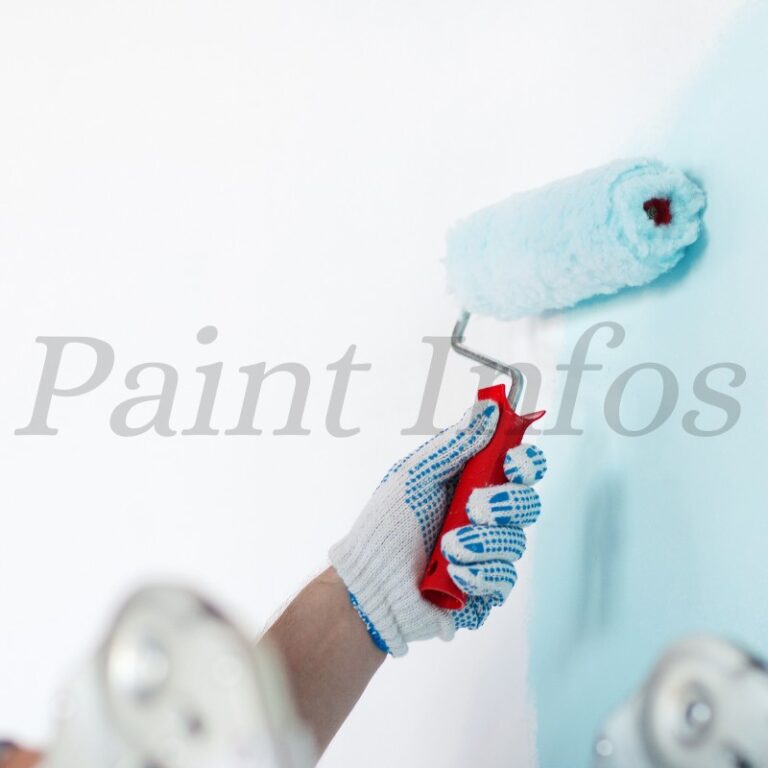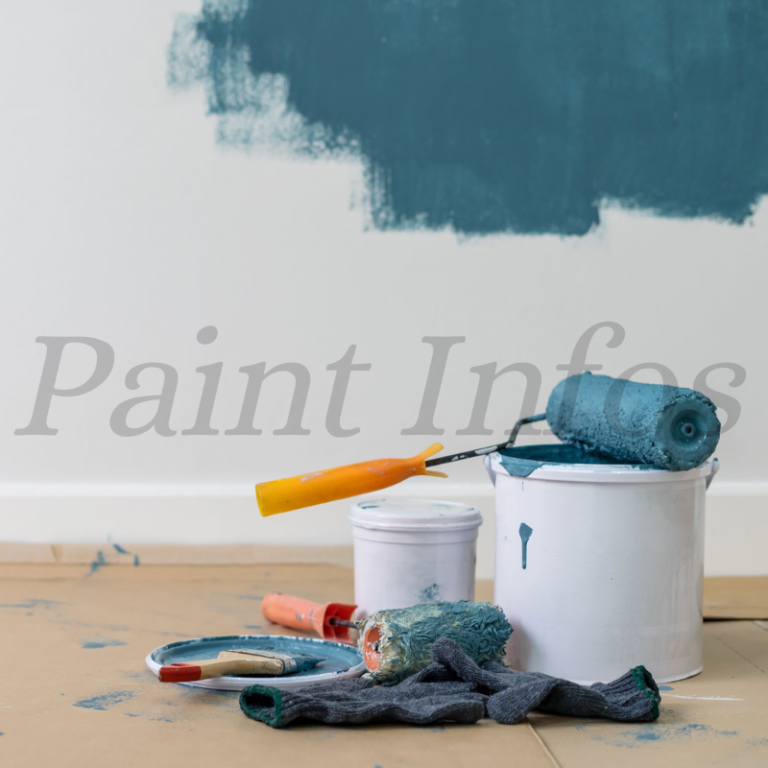You can paint over old paint, but you may need to do some prep work first. If the old paint is in good condition, you can simply sand it and then repaint. However, if the old paint is chipped or peeling, you’ll need to remove it before painting.
To do this, you can use a chemical stripper or a heat gun. Once the old paint is removed, you should sand the surface and then apply a primer before painting.
- Begin by sanding down the area you wish to paint
- This will help create a smooth surface for the new paint to adhere to
- Next, wipe down the area with a damp cloth to remove any dust created from sanding
- Once the area is clean and dry, apply a primer specifically designed for painting over old paint
- This will help the new paint color go on evenly and prevent it from peeling in the future
- After the primer has had time to dry (follow the instructions on the can), you can now start painting! Choose a paint color that you love and have fun with it!
Can You Paint Over Old Paint on Wood
Yes, you can paint over old paint on wood, but there are a few things you need to do first in order to ensure that your new paint job will look its best. If the old paint is in good condition and is well-adhered to the wood surface, then you can simply clean it and start painting. However, if the old paint is peeling or flaking, then you’ll need to remove it before painting.
To remove old paint, you can use a chemical stripper or a sanding machine. Once the old paint is removed, be sure to sand the surface of the wood smooth before applying any new paint.
Do I Need to Remove Old Paint before Painting Wall
Are you wondering if you need to remove old paint before painting your wall? The answer may depend on the condition of the existing paint and the desired outcome of your project.
If the current paint is in good condition and you are happy with the color, then you may not need to remove it.
You can simply prep the surface by sanding any glossy areas and cleaning off any dirt or debris. Then, apply a fresh coat of paint in the same color. This will give your wall a new lease on life without having to go through all the work of removal.
On the other hand, if the current paint is peeling, chipped, or otherwise in bad shape, then it’s probably best to remove it before repainting. This will help ensure that your new paint job looks its best and lasts for as long as possible.
To remove old paint from a wall, start by stripping off any loose or flaking paint with a putty knife.
Then, use a chemical stripper to loosen up any remaining paint so that it can be scraped away easily. Once all the old paint has been removed, sand down the surface to create a smooth base for painting. Finally, clean off any dust or debris before applying primer and new paint.
Can I Paint Over Old Paint on Metal
If you have old paint on metal that needs to be updated, you can usually just paint over it. However, there are a few things you need to do first in order to ensure that your new paint job will look its best.
First, start by thoroughly cleaning the surface of the metal.
This will help the new paint to adhere better and also make sure that any dirt or grime doesn’t show through. Next, use a primer specifically designed for painting metals. This will help the new paint to last longer and resist fading or chipping.
Once you’ve prepped the surface, go ahead and apply your new coat of paint. Be sure to use a brush designed for use with metal paints so that bristles don’t get stuck in the finish. And finally, give the newly painted surface plenty of time to dry before using it or putting anything back on top of it.
Painting Over Old Paint Peeling
If you’re considering painting over old paint that’s peeling, there are a few things you should keep in mind. First, it’s important to remove as much of the loose paint as possible. This can be done with a putty knife or other scraper.
Once you’ve removed the loose paint, sand the area to create a smooth surface for the new paint to adhere to. If necessary, apply a primer before painting. When selecting your paint, make sure to choose one that’s appropriate for the surface you’re painting (e.g., an oil-based paint for wood).
And finally, be sure to follow the manufacturer’s instructions for application and drying times. With proper preparation and execution, painting over old peeling paint can give your surfaces a fresh new look.
Do You Need Primer to Paint Over Paint
When it comes to painting over paint, there are a few things you need to take into consideration. One of those things is whether or not you need primer. In general, you will need primer when painting over a darker color with a lighter one, when painting over a glossy surface, or when painting new drywall.
If you’re unsure whether or not you need primer, it’s always best to err on the side of caution and go ahead and use it.
Can I Paint Straight Over Old Paint?
It’s a common question: can I paint straight over old paint? The short answer is yes, you can! But there are a few things you need to do first in order to make sure your new paint job will look its best.
Here are the steps to follow if you’re painting over existing paint:
1. Start by giving your walls a good cleaning. This will remove any dirt or build-up that could prevent the new paint from adhering properly.
2. Next, sand down the walls to create a smooth surface for painting. If the existing paint is in good condition, you can just use a light sandpaper; but if it’s peeling or flaking, you’ll need to use a heavier-grit paper and put more elbow grease into it.
3. Once the walls are prepped, it’s time to prime them.
This step is important because it will help your new paint adhere better and provide an extra layer of protection against wear and tear. Be sure to choose a primer that’s compatible with the type of paint you’ll be using (latex or oil-based).
4. Now you’re ready to start painting!
Follow all instructions on your chosen paint can, including how long to wait before applying a second coat (if necessary). And that’s it – once everything is dry, enjoy your freshly painted space!
Do You Have to Remove Old Paint before Repainting?
If you want to achieve a professional looking paint job, then it is recommended that you remove any old paint before applying new paint. There are a few different ways that you can go about removing old paint, such as sanding, using a chemical stripper, or heat gun.
Sanding is the most common method of removing old paint from surfaces like wood or drywall.
It is also the least expensive and time-consuming option. However, it can be quite messy and dusty, so be sure to do it in a well-ventilated area.
A chemical stripper is another popular method for removing old paint.
Chemical strippers are typically stronger and more effective than sanding, but they can also be more dangerous to use. Be sure to read the instructions carefully before using them and always wear gloves and eye protection when working with them.
Heat guns are often used by professionals to remove old paint from surfaces like metal or glass.
They work by heating up the paint so that it peels off easily. However, heat guns can be very dangerous to use if not handled properly, so it is important to read the instructions carefully before using one.
How Do You Paint Over Old Painted Walls?
Assuming you want to paint over existing paint and not remove it:
1. Clean the walls. Use a sponge or brush and soapy water to clean any dirt, grease, or other residue off the walls.
If your walls are particularly dirty, you may need to use a degreaser or heavy-duty cleaner. Be sure to rinse the walls thoroughly after cleaning them.
2. Sand the walls.
Once your walls are clean, lightly sand them with fine-grit sandpaper (120-grit) to create a smooth surface for painting. Wipe away any dust created by sanding with a damp cloth.
3. Prime the walls.
Apply a primer designed for use on glossy surfaces (such as latex wall paint) using a roller orbrush. This will help ensure that your new paint job will have good coverage and adhesion. Allow the primer to dry completely before proceeding to step 4.
4. Paint the walls . Begin by painting the trim around the room first, then move on to painting the rest ofthe wall space in sections (using a roller).
How Many Times Can You Paint Over Old Paint?
Assuming you’re talking about painting over latex paint with latex paint:
The general consensus is that you can paint over old paint as long as it’s in good condition. If the paint is chipping, cracked, or otherwise damaged, you’ll need to sand it down and prime it before painting.
How many coats of new paint you’ll need will depend on the color of the old paint and the new paint. If you’re going from a light color to a dark color, you’ll likely need two coats of new paint. For best results, use a high-qualitylatex paintspecially formulated for glossy surfaces like doors and trim.
Conclusion
If you’re considering painting over old paint, there are a few things you should know first. It’s important to determine if the existing paint is oil-based or latex-based, as this will dictate what kind of primer you’ll need to use. You’ll also want to make sure the surface is clean and free of any flaking paint before beginning your project.
With a little preparation, you can successfully paint over old paint and achieve the look you desire.

